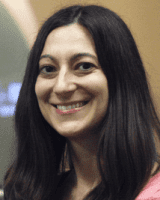A message from the Board of Directors of VSS:
VSS is one of the many member societies of FABBS, the Federation of Associations in Behavioral and Brain Sciences. VSS has been invited to contribute articles to an issue of the FABBS journal, Policy Insights from the Behavioral and Brain Sciences (PIBBS). The issue will consist of 23 invited articles, selected from submitted abstracts, that summarize an area of vision research, along with its implications for public policy. Instructions for submitting abstracts for consideration, and other relevant details, are contained in this message.
What is the Federation of Associations in the Behavioral and Brain Sciences (FABBS)?
FABBS is a coalition of scientific societies, including VSS, that share an interest in advancing the sciences of mind, brain, and behavior. FABBS communicates the importance and contributions of research in these areas to policy makers, research funding agencies, and the public. FABBS has advocated on behalf of vision science in relation to levels of funding and the interpretation of policies regarding clinical studies.
What is Policy Insights from the Behavioral and Brain Sciences?
PIBBS publishes brief, reader-friendly summaries of contemporary research findings that are relevant to efforts to promote new policies and/or new funding directions. Articles must contain brief statements describing or suggesting policy implications of the work. Articles are citable.
Where can I find examples of PIBBS articles?
Check the PIBBS website. Each article contains a summary of the research and ends with a brief, general implication for policy.
What does “policy” refer to?
Policies may include advocacy for research or funding directions, industry-academic partnerships to accomplish shared goals, formal establishment of new international collaborations, or new practices or guidelines relevant to education, health, or the workplace.
What types of research in vision might have policy implications?
Many research directions in vision science have practical implications for policies. Some examples:
- Application of perceptual research involving VR or other emerging visual technologies to benefit education, the workplace or health;
- Applications of research on perceptual learning, visual memory or perceptual aspects of reading to education policies, practices or funding;
- Use of research on perception to develop technologies or practices relevant to young, aging, or special populations;
- Application of research on face perception to identify biases in judgments that may impact social policies;
- Development of effective visual presentations of publicly-available data.
What is the value to vision science or to me in submitting an article to PIBBS?
FABBS circulates PIBBS to policy makers and funding agencies. A PIBBS article is also a citable publication that may be useful to you in disseminating the applications of your work to a wide audience.
Who can submit?
This opportunity is open to any 2022 or 2023 VSS member from any country, including student and postdoctoral members. Even though FABBS is a US-based organization, it is interested in policies that enhance international collaborations and cooperation.
What is the process?
Any VSS member (2022 or 2023) can submit an abstract (no more than 200 words) for consideration. Your abstract should summarize the previously-published research that will be reviewed in your article and include a description of the policy implications or applications. (Abstracts presenting new unpublished findings will not be considered.) Include title, authors, authors’ affiliations, authors’ contact information, and a brief bibliography. Indicate which author(s) are VSS members (one or more must be a 2022 or 2023 VSS member). Send your abstract as a PDF file attachment to by January 17, 2023. From the submitted abstracts, 23 will be invited to prepare and submit a manuscript.
Are there costs?
There is no cost to authors.
What is the timeline?
Abstracts are due January 17, 2023. Invitations to prepare an article will be sent to those selected by the end of January. Articles will be due May 1, 2023. The submitted articles will then be reviewed with an eye to acceptance. FABBS manages the process in collaboration with the VSS Board.
What if I have questions?

 Freek van Ede
Freek van Ede Radoslaw Cichy
Radoslaw Cichy Julie Golomb
Julie Golomb